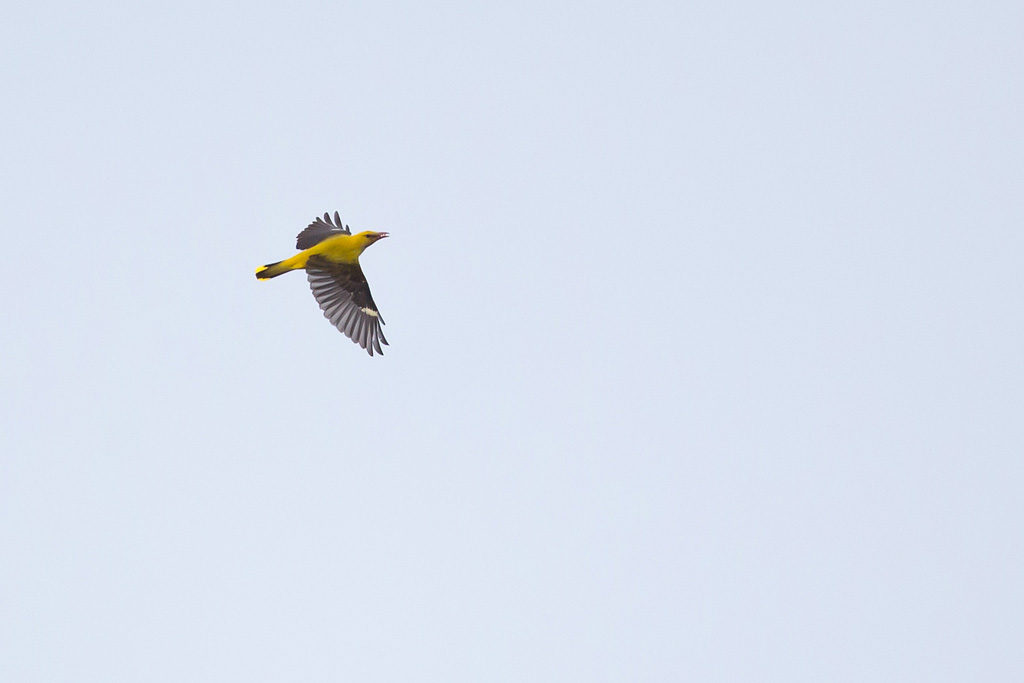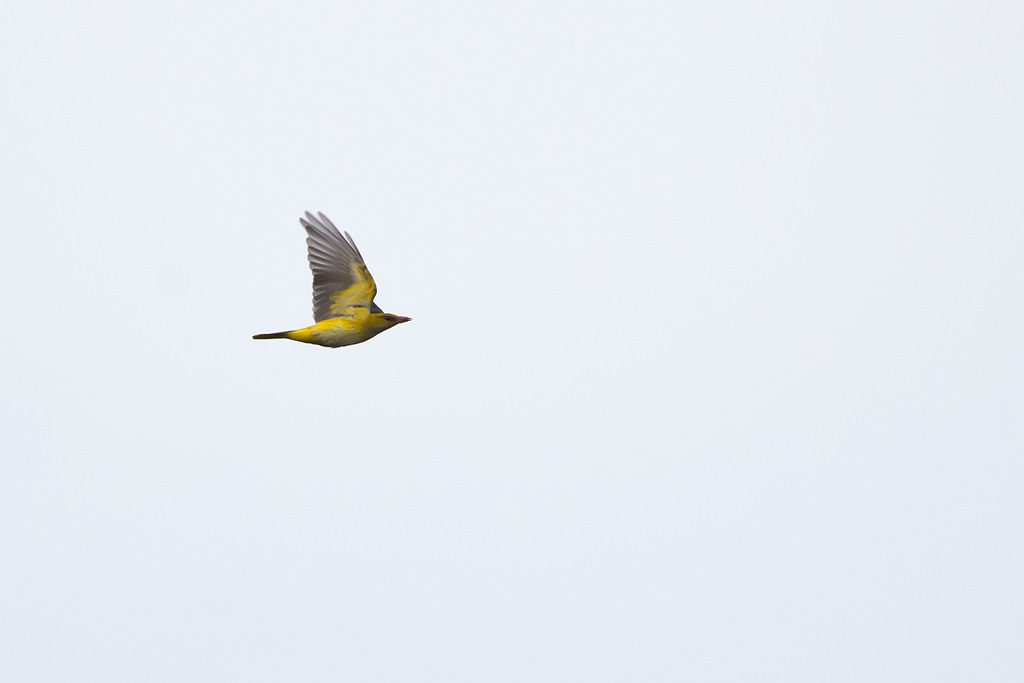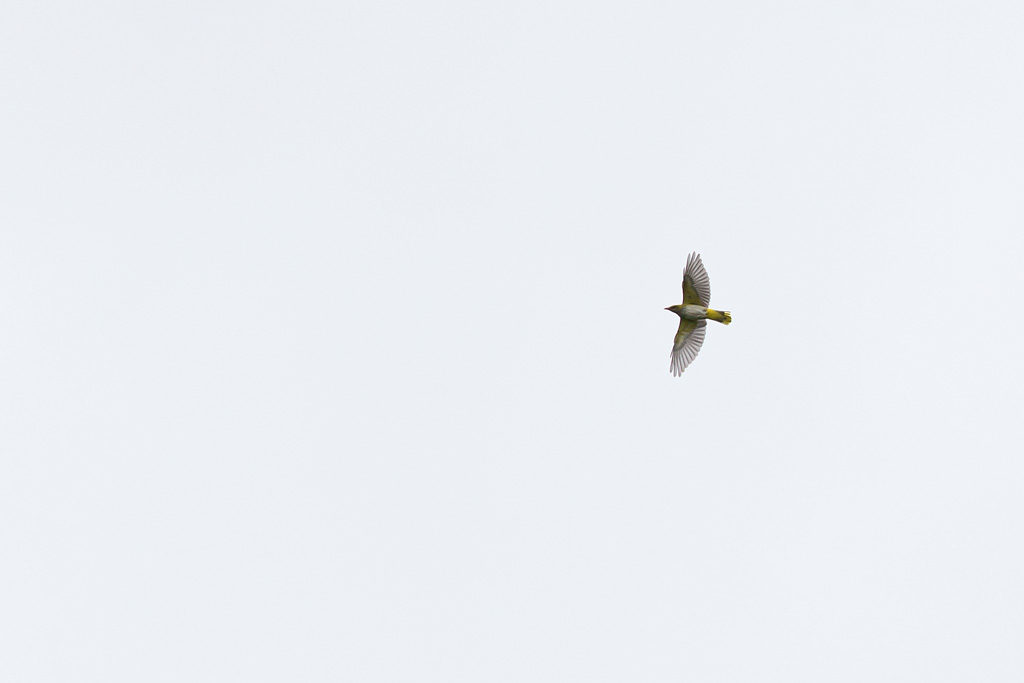>> GENERAL >>>>>
– medium-sized passerine, slightly smaller than Common Blackbird but longer wings
– nocturnal/diurnal migrant
>> FLIGHT >>>>>
– migrate singly, as pairs (spring) in family parties (autumn)
– sometimes small flocks aggregate, but without real formation
– flight style somewhat between starling, a large thrush or a very large lark
– wings much longer than starlings
– flight straight and strong
>> VISUAL ID >>>>>
– spectacular colours of males often seen surprisingly late in approaching birds
– females appear monochrome and colours only really visible against a dark background

Eurasian Golden Oriole Oriolus o. oriolus, AD F
BIF0789, 27/06/2014, Jüterbog, Germany, Mathias Putze
Eurasian Golden Oriole Oriolus o. oriolus, AD F
BIF0790, 27/06/2014, Jüterbog, Germany, Mathias Putze
Eurasian Golden Oriole Oriolus o. oriolus, IMM
BIF0791, 25/06/2014, Prignitz, Germany, Mathias Putze
>> SOUND ID >>>>>
– is supposed to be non-vocal on migration
– a frequently uttered social call nevertheless reveals small groups already from a greater distance – nevertheless not a real flight call!
– that slightly overslurred call sounds squeaky, resembling Red Knot or Bar-tailed Godwit
– uttered as single calls, couplets or triplets
– contrary to many sources, uttered by adult and juvenile birds (in Autumn and Spring)

Eurasian Golden Oriole Oriolus o. oriolus, AD
BIF2716, 12/07/2008, Leipzig, Germany, Patrick Franke
>> COMPARISON SPECIES >>>>>
Red Knot (a)
Bar-tailed Godwit (a)
Grey-headed Woodpecker (v)
European Green Woodpecker (v)
#songbird #passerine #oriole
#ornithology #birdmigration #birdID #birdguide #birding #birdwatching #birdsound #westernpalearctic #europe #vismig #flightcalls #middleeast #northernafrica #workinprogress